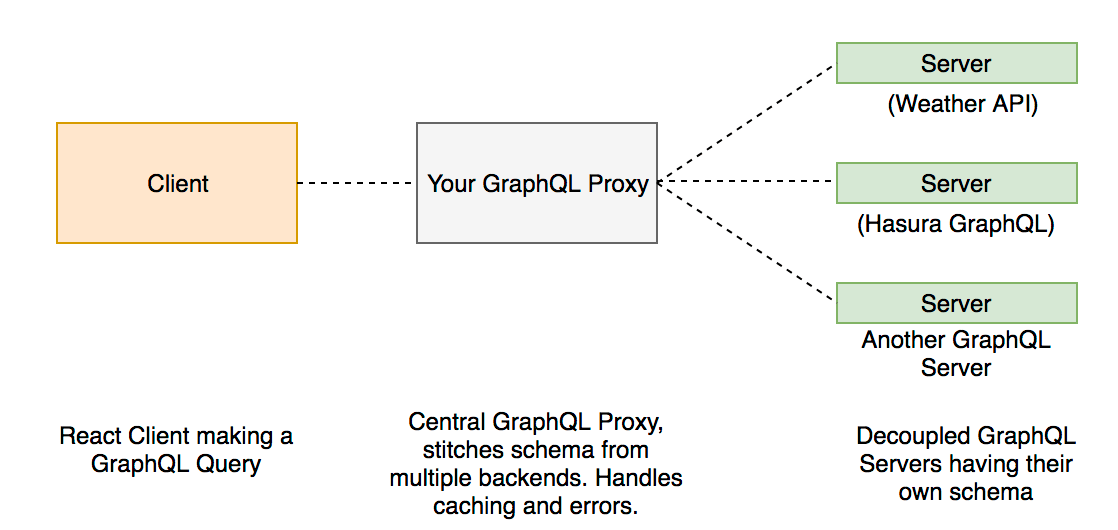GraphQL Schema Stitching¶
Schema stitching is the process of creating a single GraphQL schema from multiple underlying GraphQL APIs.
Schema stitching allows you to have one unified API that allows the client to query multiple GraphQL Schemas at the same time, including relations between the schemas.

In the above architecture, we see that there are multiple decoupled graphql services running somewhere and a central server acts as a GraphQL Proxy server and it combines the different schemas into a unified API that the client can query on.
Let’s go through a simple example to understand why schema stitching might be required in certain use cases and how it can be leveraged to unify all your APIs to a single GraphQL API.
Assume the following database schema in PostgreSQL:
| Table | Columns |
|---|---|
| person | id, name, city |
We have a simple person table with columns id, name and city. For this example, the above table has anonymous select permission.
The GraphQL query in Hasura Data API for the above table would look like:
query fetch_person {
person {
id
name
city
}
}
This is a simple select on table person.
On the other hand, we have a GraphQL server for fetching weather information that connects to Meta Weather API.
The GraphQL schema for this weather API looks like:
type CityWeather {
temp: String
min_temp: String
max_temp: String
city_name: String!
applicable_date: String!
}
type Query {
cityWeather(city_name: String! applicable_date: String): CityWeather
}
The GraphQL query to fetch this weather information would look like:
query {
cityWeather (city_name: "Bangalore") {
city_name
temp
min_temp
max_temp
applicable_date
}
}
Explore this API on Apollo LaunchPad
Note the usage of city_name as an argument for cityWeather query. Using this we can extend our original Postgres’s person schema to include weather information based on the city column of the person table.
extend type person {
city_weather: CityWeather,
}
We have extended the type person to have one more field called city_weather. This will resolve to the weather schema defined above and the respective resolver will return appropriate data.
The source code for the custom resolver can be found on github - graphql-schema-stitching-demo.
Note the usage of mergeSchemas, a graphql-tools utility that enables schema stitching.
Now the merged schema can be queried as:
query {
person {
id
name
city
city_weather {
city_name
temp
min_temp
max_temp
applicable_date
}
}
}
This is a neat abstraction for the client making the GraphQL API, as all the merging of different schemas are done by the server and exposed as a single API.
Read the official docs on schema stitching by Apollo for detailed guides.